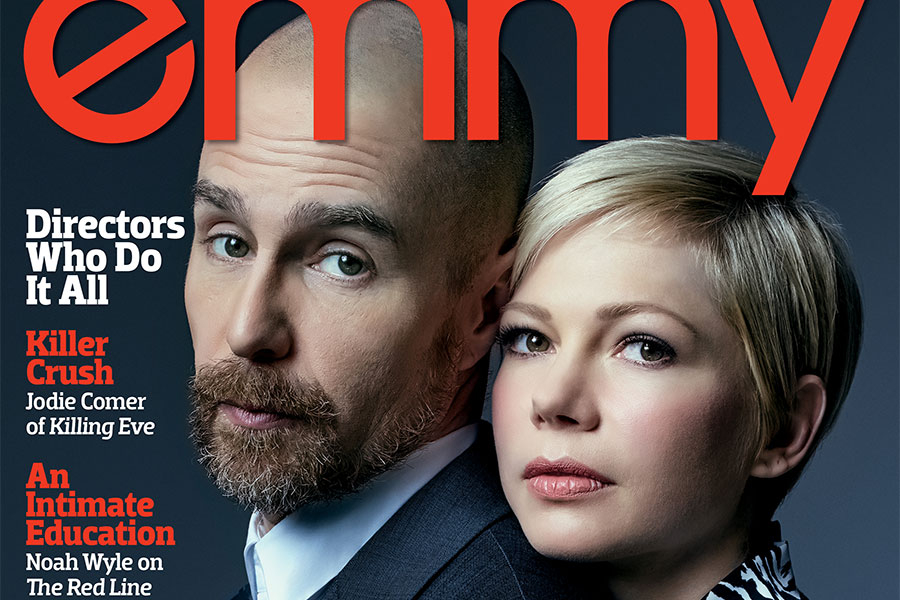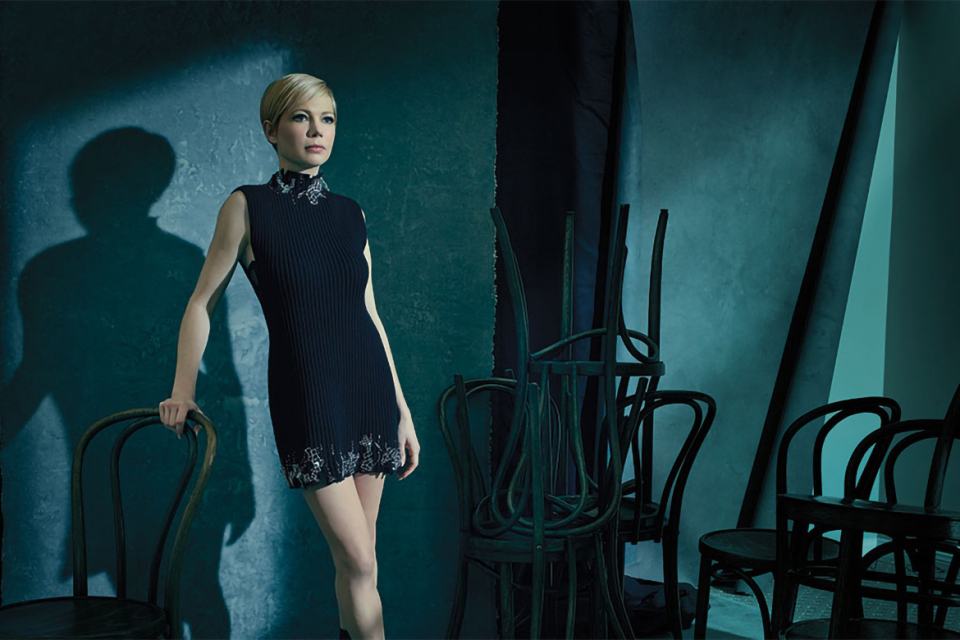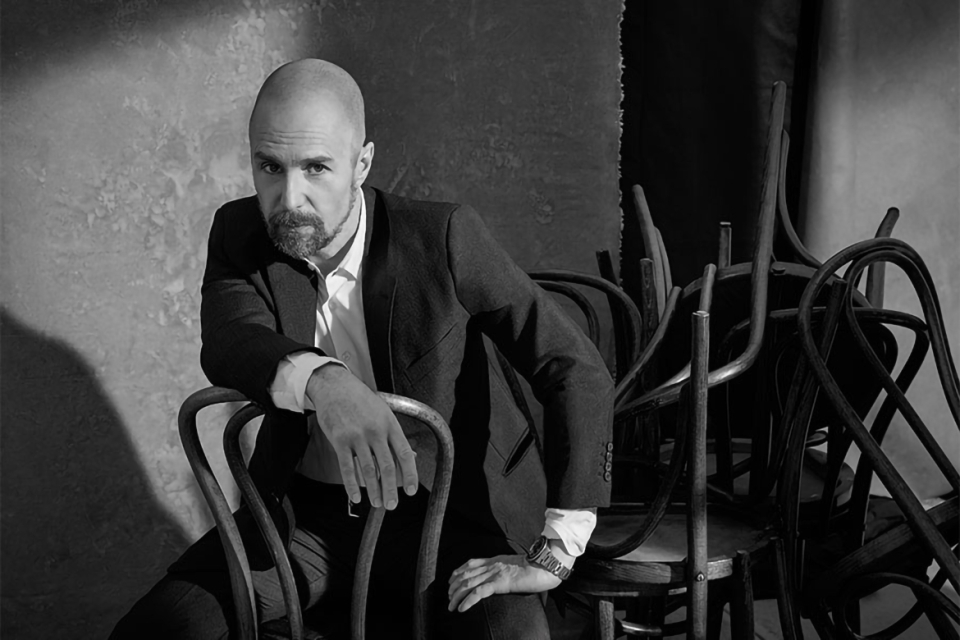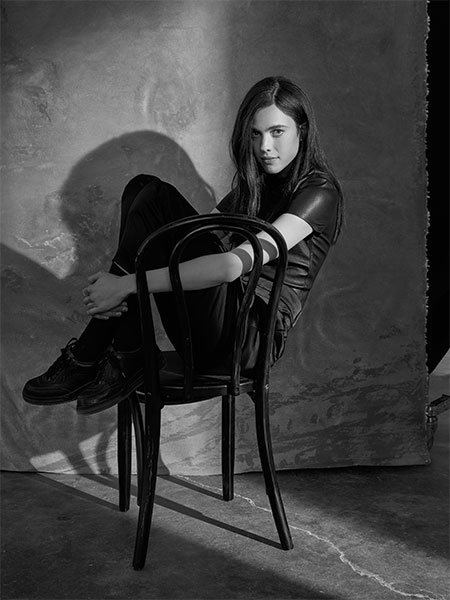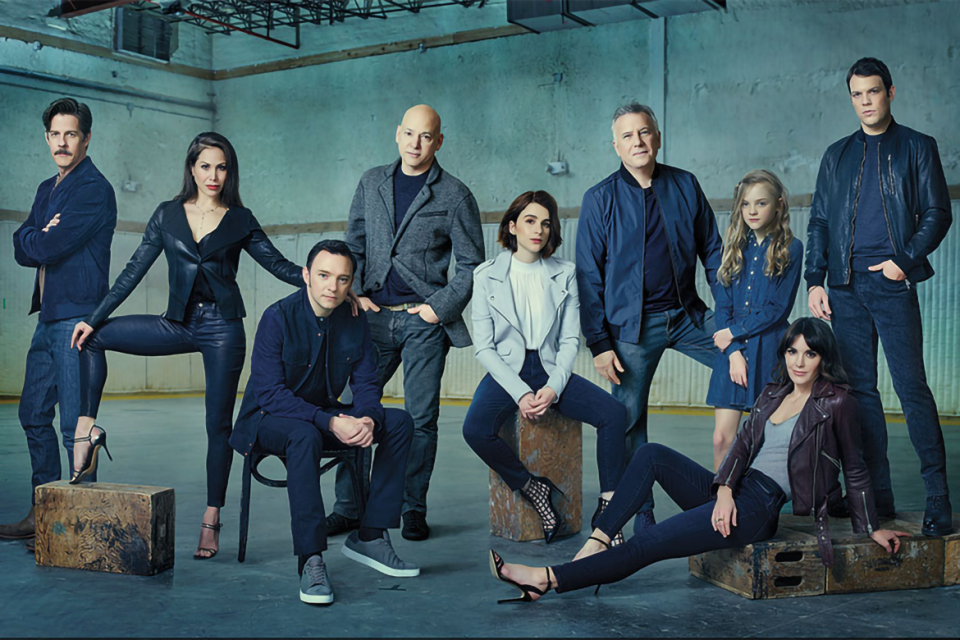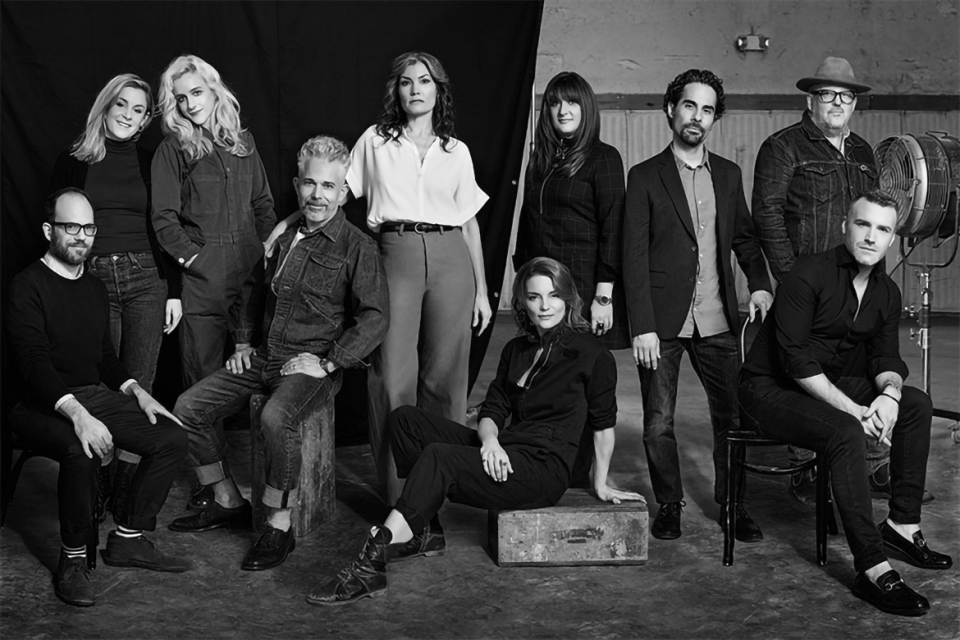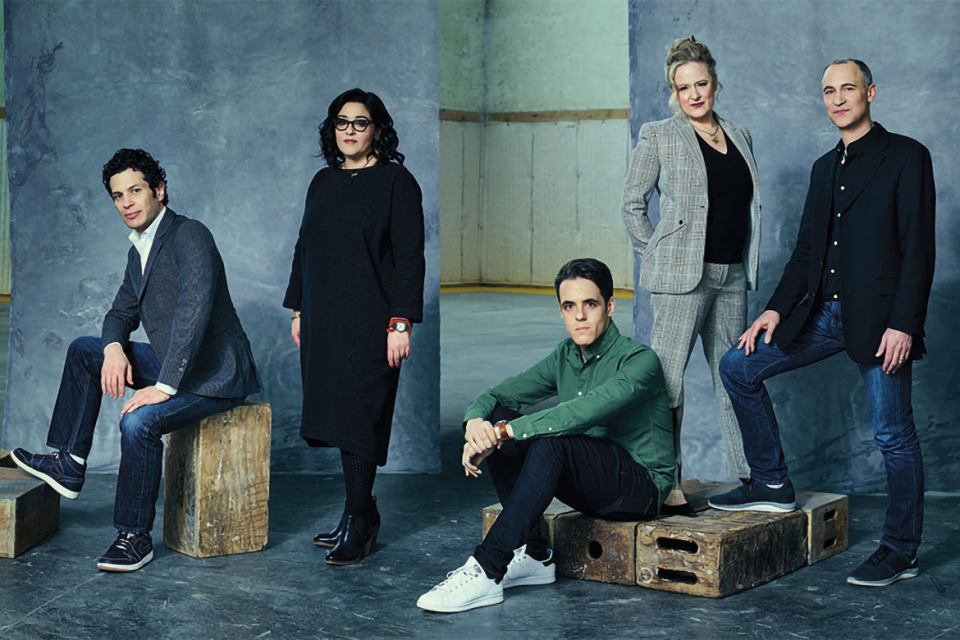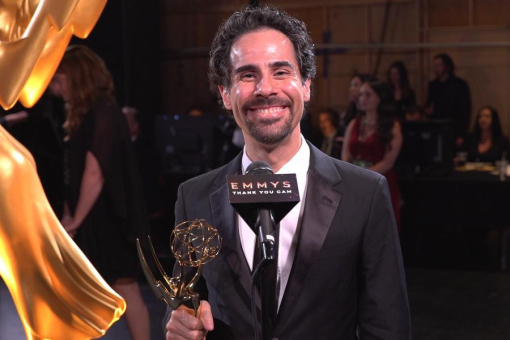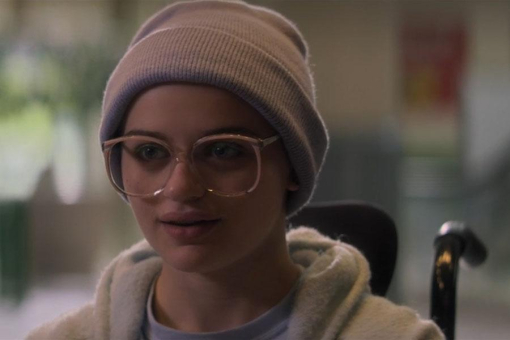On the afternoon of September 23, 1987, Broadway legend Bob Fosse rehearsed his dancers hard for that evening's opening-night revival of Sweet Charity in Washington, D.C.
He told them, "Dance like you're in church on your way to heaven," according to Fosse biographer Sam Wasson. Hours later, on his return to the theater, the pioneering stage and screen director, choreographer and dancer collapsed on the sidewalk and was soon on his way to the hereafter.
Fosse's death was noted at exactly 7:23 p.m. And in FX's new limited series Fosse/Verdon, that event hovers over the action. Throughout its eight episodes the story jumps back and forth in time, using Fosse's years, hours and minutes left on earth as both a countdown and a device to track the period shifts.
It's also a reminder that Fosse, a hard-living character and audacious talent who lived only to age 60, seemed to intuit his early demise.
"I think he was scared," says Sam Rockwell, who stars as Fosse opposite Michelle Williams as Gwen Verdon. "He was a speed addict. He drank too much. He smoked too much. He had sex too much. He rehearsed too much. His appetite for these things was insatiable."
On the other hand, Fosse was revered, winning one Oscar (for directing Cabaret), three Emmys (for the NBC special Liza with a "Z") and eight Tony Awards (for choreography of shows like The Pajama Game, Damn Yankees and Pippin). "He was a god in the dance world," Rockwell declares.
As talented and driven as Fosse was, it's impossible to separate his legacy from Gwen Verdon's — hence the series title. At various times his dance partner, muse, wife and assistant, Verdon, who died in 2000, is considered one of Broadway's greats. She garnered four Tonys for her musical-comedy performances in the 1950s and '60s.
An effervescent redhead, she charmed audiences in shows like Damn Yankees and Sweet Charity with her unstoppable energy and seemingly effortless ability to sing, act and dance full-on simultaneously. Yet her legacy has faded in comparison to his.
Fosse/Verdon, which premiered April 9 (viewers can catch up on FX+), will likely change that. It weaves the story of how these two exceptionally talented individuals found each other, teamed up, fell in love and established a lifelong collaboration — despite Fosse's infidelities and other complications posed by his compulsive behavior.
Even after they separated as spouses, "they never stopped working together and they never stopped being a part of one another's lives," says Steven Levenson, who wrote the bulk of the show and serves as an executive producer with Thomas Kail, Lin-Manuel Miranda, Joel Fields, George Stelzner, Williams and Rockwell.
"From the moment they met until Bob's death, the best work that they created was together," says Levenson, describing them as "incredible perfectionists" and "ridiculously hardworking." He adds: "They pushed one another to heights that alone they couldn't reach."
For both Fosse and Verdon, a passion for dance developed early, though in very different ways. As Wasson details in his book, which formed a basis for the series, Fosse got his start as an underage performer in sleazy Chicago vaudeville and burlesque joints, gigs that influenced the flashy movements and sexually suggestive material he would be drawn to throughout his career.
In Los Angeles, Verdon was placed in dance classes at age three to straighten her legs, made crooked from rickets. Performing by age six, she mastered ballet, tap, jazz, flamenco, ballroom and even Balinese. By the time she appeared in Fosse's work, she was in fearless command of her body.
"What this woman overcame…" says Williams — who portrays Verdon both on the stage and off — trailing off in awe.
To her benefit, Williams is no newcomer to roles requiring rigorous singing and dancing. She triumphed as Sally Bowles in a 2014 Broadway revival of Cabaret. And her starring role in the 2011 indie My Week with Marilyn — in which she recreated Marilyn Monroe's sultry performance of "Body Heat" — led to one of her four Oscar nominations (the others came for Manchester by the Sea, Blue Valentine and Brokeback Mountain).
"That's when I embarked on a more physical relationship to my work," says Williams, who studied dance for hours on end for Fosse/Verdon. She was delighted to discover that her muscles retained memories of tap dancing as a child.
"I've been saying, 'This part has been 38 years in the making,'" Williams continues. "It's calling on every aspect of my physical capability. My emotional capability. My imaginative capability. We play these people from their early 30s to early 60s, which is something I've never done before."
Rockwell — Oscar-nominated this year for Vice and a winner last year for Three Billboards Outside Ebbing, Missouri — is similarly enthused about portraying Fosse. "I was in right away," he says. "I just knew this was a good part for me. I knew there was something about Fosse that I identified with," says the actor, suggesting that he shares with Fosse a laid-back appearance that belies any turmoil roiling beneath the surface.
And while modest about his dancing — "I'm a hoofer, but not like Bob Fosse" — he brought experience to the set. "I've done a little bad breakdancing and hoofing," says Rockwell, who started serious training months ahead to absorb Fosse's dance vocabulary and some of the pieces he's famous for, like "Snake in the Grass," which he performed in the 1974 movie The Little Prince. "We hit a lot of stuff."
Rockwell also shadowed Andy Blankenbuehler, a Fosse/Verdon coproducer and choreographer (with Susan Misner) intimately familiar with the Fosse repertoire, having performed in the Broadway revue Fosse. That's where Blankenbuehler met Verdon, who took his hand during his audition and showed him some steps.
A septuagenarian at that point, she was still imbued with the joy of dance. Now it's his honor, he says, to pass some of those gifts along.
"Sam spent a lot of time watching me," Blankenbuehler recalls. "He attended auditions that I was giving and rehearsals that I was running. He would start to imitate the way I would look at dancers or the way I would call out counts. I think it was cool for Sam to watch a choreographer who carries the legacy in the same way."
The executive producers also brought in actress-dancer-producer Nicole Fosse; the only child of Fosse and Verdon, she serves as a coexecutive producer.
Kail, who directed Miranda's Broadway hits Hamilton and In the Heights — winning a Tony for Hamilton — and won Emmys as an executive producer and director of the Fox special Grease: Live!, directed five of the eight episodes of Fosse/Verdon.
Before beginning work on the series, he traveled with Levenson to Nicole's home in Vermont to obtain her blessings. "It was important for me to go talk to Nicole," he explains, "and make sure she understood what kind of story we were trying to tell."
During the series' five months of production in New York, Nicole Fosse was often on set, providing insights into her parents and steering the team away from any possible false note. "She is an incredible ally and partner in this," Kail says. "She has these nuggets that no one else knows about that add color."
One anecdote Nicole shared concerned her father's smoking habits. A chain smoker, he usually put out his cigarettes in empty coffee cans. But Fosse struggled with choreography more than one would imagine, and while trying to come up with new material, he went through cigarettes compulsively.
When an idea came to him, Nicole told the production team, he would drop his cigarette right where he was standing. "He'd just start choreographing," Blankenbuehler says. "That told you a lot about the man."
In his work, Fosse was drawn to props like hats and chairs. He's also known for the many signature moves that gave his dances their cool, jazzy feel — the turned-in knees, sideways shuffle, splayed hands and hunched shoulders. He'd give them names like "scoop the ice cream," Nicole said. "Right away you get what it is," Blankenbuehler marvels.
Another move, dubbed "show of rings," looks exactly like what a woman would do if she were showing off her new engagement ring. "Then you really feel like you are in the room with them," says Blankenbuehler, who used Fosse's movement terminology when reconstructing pieces from his oeuvre with the scores of dancers who appear in Fosse/Verdon.
Before Verdon and Fosse became a successful show- biz couple, they were rising stars on their own. Verdon had already won a Tony for her role in Cole Porter's Can-Can. A total dance fiend, she would practice pliés even while stirring a pot of spaghetti on her stove.
Fosse, meanwhile, had performed for MGM in various movies and choreographed his first musical, The Pajama Game. Next hired to choreograph Damn Yankees, he auditioned Verdon for the role of the vampish lead, Lola. "They met and it was — bang! — fireworks, artistically and otherwise," Rockwell says.
"She was so, so, so in love," says Williams, adding that Verdon once said, "I'd set my hair on fire if he asked me to." The fondness they felt for each other apparently never faded. Williams recalled listening to a recording of Fosse from much later in life, in which he said, "Oh, Gwen? She's my best friend."
But Fosse/Verdon goes beyond that very personal story to depict how the pair helped revolutionize the American musical.
When the couple first connected, musicals tended to be cheery, wholesome family fare, explains Levenson, who won a Tony Award in 2017 for writing the book for Dear Evan Hansen. "That corny image is what Fosse was fighting against," the producer says. With shows like Sweet Charity, "he brought a darkness and an edginess and an electricity that hadn't been there before."
Despite his enormous success, Fosse acted out in self-destructive ways. He was a womanizer (even cheating on his mistresses), which prompted his and Verdon's separation though they never officially divorced. He took drugs to spur his creativity.
Rockwell believes he was riddled with insecurity and self-loathing. "But he was very self-aware. He knew how fucked up he was," says the actor. "He was also this amazingly charming and kind-hearted guy who did some bad shit. It's complex."
For Rockwell, each shooting day started in hair and makeup, where he was fitted with a bald cap and a comb-over to match Fosse's attempts to hide his receding hairline. "It's a lot of makeup and glue on my head every day," says Rockwell, who also worked with a voice coach to simulate what he describes as Fosse's "silky, higher-pitched" tones.
Equally important, he mastered how to talk and dance with a cigarette protruding from his mouth. Fosse would keep his lips dry enough to grip the cigarette solidly in place, no matter how rambunctiously the rest of him moved. "The smoke gets in your eyes sometimes," Rockwell says. "It makes you squint."
Rockwell also learned that Fosse might stare at the studio mirror for hours when trying to come up with new movements. A scene like that, in fact, was recreated in Fosse/Verdon, in which the dancers stare at him, awaiting his direction. "And he's overwhelmed," says Rockwell, who ad-libbed in that moment, barking something like, "What are you looking at?"
"Sam is such an instinctual actor," Levenson says. "He can't do it if it doesn't feel authentic." The producer recalls going over a script with Rockwell early on. "He said, 'I think I'd only say half of this.' That struck me as exactly right. Since then, it's been about paring away."
In many ways, Verdon was Fosse's opposite. "She was incredibly extroverted, charming, well-spoken and loved by everyone," Levenson says. Which is the impression Williams gives as Verdon on a snowy afternoon on set in late January, snug inside Silvercup Studios North in the Bronx.
Williams, usually a blonde, sports red curls and bangs that frame her face. Draped in a loose '60s style leisurewear pantsuit, she appears slightly aged by makeup artists. "I really don't mind that aspect at all," she offers. "It's more, 'Is this how Gwen aged?' She aged up and out. She didn't age down and in."
In this scene, Williams plays opposite Margaret Qualley as Ann Reinking, the Broadway performer who, for a time, was Fosse's muse and romantic partner. But no tension is apparent between the women. On each take, Williams enters the dining room and helps set the table.
She nails her lines while alternating her movements, picking up various goblets or plates and setting them down differently each time. "I never find success when I try and repeat myself," Williams says later. "It just feels dead. It feels old."
When she wasn't shooting scenes, Williams pushed herself hard in the dance studio. At day's end: a hot bath and her script, to start memorizing the next day's lines.
Fosse/Verdon comes at a good moment to shore up the memory of these two consequential American artists — especially Verdon, who's been more overlooked. And as the first episode indicates, she will get her due (no plot spoilers!).
It begins with the two, still young, rehearsing. He's manipulating her body in various ways to come up with something that'll razzle-dazzle the audience. "Or this?" she suggests, offering an idea of her own. "Show me the reverse," Fosse asks. He looks and shrugs, "Eh, your way was better."
And that's just the start. Subsequent scenes show her instructing Fosse's chorus dancers on how to roll their shoulders with the right attitude. She chooses the plunging black top that Liza Minnelli made famous as Sally Bowles in Fosse's Cabaret. She plays intercept with a producer disgruntled over Fosse's "too dark" lighting.
And she even flies from Munich to New York and back to procure an ape costume that can't be found in Germany.
"I'd always looked up to the incredible work that Bob Fosse had done as a filmmaker, theater director and choreographer," says executive producer Joel Fields. "One of the things that I hope will surprise the audience is the extent to which Gwen Verdon was part of the artistic contribution. People just don't know about her, even though she was at one time one of the greatest stars in the world."
Rockwell concurs: "Fosse met his match with Gwen Verdon. She really understood him and could elaborate on what he was trying to do. For him, Gwen was the perfect partner."
Go behind the scenes of emmy's Fosse/Verdon photo shoot at TelevisionAcademy.com/cover.
This article originally appeared in emmy magazine, Issue No. 3, 2019

